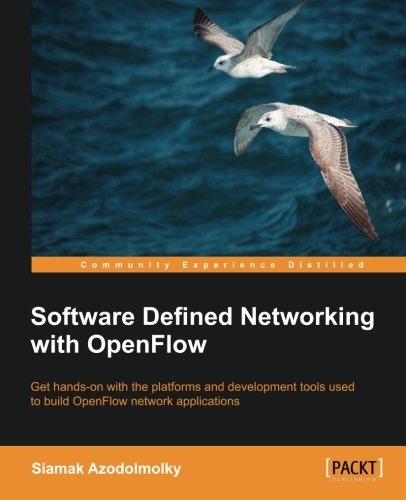

Most ebook files are in PDF format, so you can easily read them using various software such as Foxit Reader or directly on the Google Chrome browser.
Some ebook files are released by publishers in other formats such as .awz, .mobi, .epub, .fb2, etc. You may need to install specific software to read these formats on mobile/PC, such as Calibre.
Please read the tutorial at this link: https://ebookbell.com/faq
We offer FREE conversion to the popular formats you request; however, this may take some time. Therefore, right after payment, please email us, and we will try to provide the service as quickly as possible.
For some exceptional file formats or broken links (if any), please refrain from opening any disputes. Instead, email us first, and we will try to assist within a maximum of 6 hours.
EbookBell Team

4.8
34 reviewsGet hands-on with the platforms and development tools used to build OpenFlow network applications
Overview
In Detail
OpenFlow is an open interface for remotely controlling tables in network switches, routers, and access points. It is considered a turning point in Software Defined Networking (SDN), data center networking and virtualization as, more secure and efficient data centers are being built using OpenFlow. It defines a protocol that lets a controller use a common set of instructions to add, modify, or delete entries in a switch's forwarding table.
Starting with an introduction to SDN and OpenFlow, you will learn about the role of each building block, moving onto demonstrations of how SDN/OpenFlow can be used to provide new services and features, which will change the way that networking works and the innovative business impacts. By the end of this practical guide, you will have an insight into the Software Defined Networking and OpenFlow fundamentals.
Packed with detail, this book will walk you through the essentials; you will learn about the OpenFlow protocol, switches, and controllers. Following on from this, you will be taken through a number of practical, hands-on examples on how to use a network emulation platform called OpenFlow laboratory. You will learn how to develop your innovative network application using the OpenFlow controller’s API quickly, and test your network application without commissioning any OpenFlow hardware equipment. You will also be introduced to the concept of Software Defined Networking and the details of OpenFlow’s protocol, along with the building blocks of an OpenFlow networking deployment. This book will teach you how to setup your OpenFlow/SDN laboratory using state-of-the-art technology and open source offerings.
What you will learn from this book
Approach
A step-by-step, example-based guide which will help you gain hands-on experience with the platforms and debugging tools on OpenFlow
Who this book is written for
If you are a network engineer, architect, junior researcher or an application developer, this book is ideal for you. You will need to have some level of network experience, knowledge of broad networking concepts, and some familiarity with day- to- day operation of computer networks. Ideally, you should also be familiar with programing scripting/languages (especially Python and Java), and system virtualization.